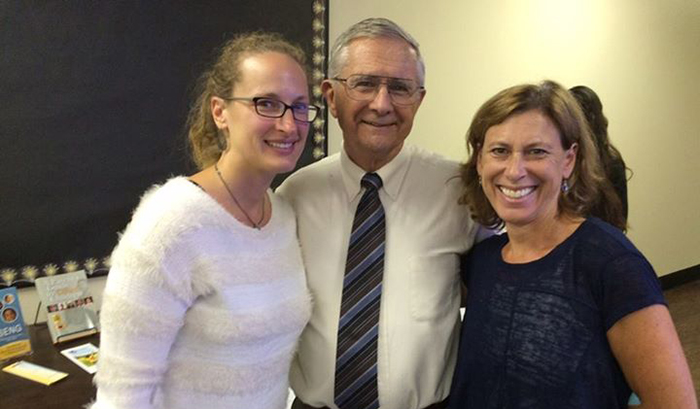Fifth in a series.
Re: “Prof. Kent Rates Peers as No. 1”
One reason Prof. Kelly Kent is a fascinating candidate for the School Board on Nov. 3 is that she is throbbing with theories about education.
She was ruminating the other day about the importance of peers to both students and grownups.
“When I was in high school and in my 20s, I had no idea how important peer education was,” she said. “It wasn’t until I got into psychology and neuroscience, and even became an educational trainer myself, that I realized adults are really important. Role models are huge.”
Dr. Kent’s subject was crowded classrooms and how to teach effectively in a dense environment. “Peers speak mountains more,” she said, “especially in adolescent years.”
Peers are vital to adults, too, said the mother of two. “I can see it in myself in hindsight, forming my own political views, forming my own historical perspectives.
“What I remember from this is my peers. And those were not uninformed opinions,” Dr. Kent said, “because we were in a classroom environment. It would be discussion-based. We would be talking about a period in history, and there would be a discussion.”
Many educators see student home life as a dividing classroom factor, contending that those from poor families routinely experience more difficulties along their learning paths than students with access to more learning tools at home.
Dr. Kent believes that “societal influences are bigger than home life, philosophically, generally from experience as an educated person. I think society influences your positions more than your parents.
“But when I think about my experience at Friends (Academy, New York, where she attended high school), we all were experiencing the same society-ish, plus or minus a little. In New York, Friends Academy was a relatively privileged atmosphere, with some exceptions. Super-protective.”
Dr. Kent estimated that 70 percent of enrollment at the Quaker school was Jewish, “all of whom lived in Stuyvesant town or nearby. We had a very similar set of societal influences. Yet there were differences among the students, and where would those differences have come from?
“The only answer I can come up with,” Dr. Kent said, “is home.”
(To be continued)

